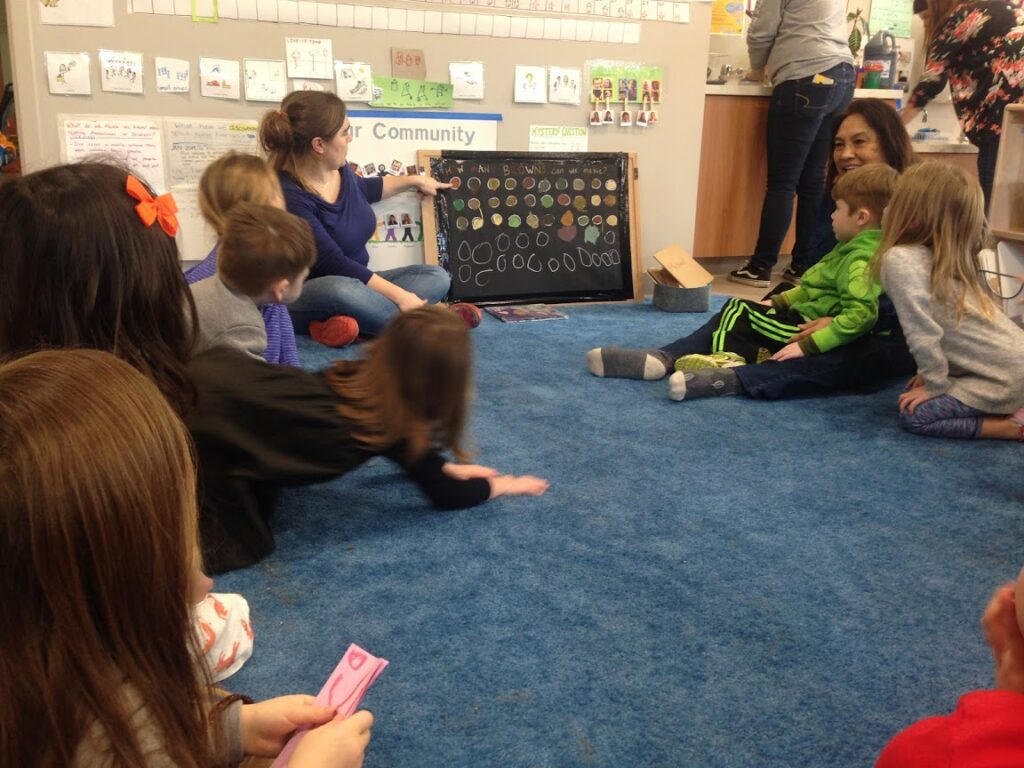
“We’re all the same!”
“There’s more that unites us than divides us”
“I just don’t even notice difference.”
As adults, we are often quick to point away from difference and towards “sameness.” We shy away from difference because many of us received the message- through our families, middle school bullies or just living around media that portrays only a narrow (young, thin, white, able-bodied,etc) view of beauty- that to be ‘different’ from the group is the absolute worst thing. But research is showing us that diversity- that is, having a wide array of differences, whether it’s genetic material or lived experience, might be initially less comfortable, but leads to greater creativity, innovation and empathy in the long run. Difference isn’t the problem, it’s the way we talk about it that is.
When children point out the physical differences they see (often loudly, in public and without using the most gentle language), we are quick to shush them and move along, making sure we loudly chastise them for being rude. While it’s true that talking about a person rather than talking to them can be unkind, often that subtle message is lost and what kids hear instead is “difference is bad- so bad we can’t talk about it.” We’d like to pretend that if we don’t talk about race with our children, the problem of racism will go away, but actually the opposite is true. Even if your child isn’t making loud proclamations you wish they wouldn’t, they notice physical differences such as skin and hair color as early as 6 months old and are often filled not with shame or fear, but pure curiosity. Rather than shut it down or pretend that the differences they notice don’t exist, we need to nurture this curiosity, give children words to express this curiosity in a kind way and help children to understand physical difference in a joyful way. Doing so not only helps to develop anti-racist attitudes, but actually helps kids build the skills that allow them to see, acknowledge and appreciate differences of all kinds, including those that are more abstract and less visible, such as differences in viewpoints and beliefs (much in the same way that learning to count is foundational to learning algebra.)
One thing that makes difference more comfortable to talk about (at home or at school) is to create a shared vocabulary. All the Colors We Are is my favorite place to start when talking about race with children. Not only does it frankly acknowledge that human skin comes in a variety of shades, but also gets into the science of why (melanin, ancestors, etc) in a clear, totally age appropriate way. During our first year of WS, we began our investigation into race with this book and a challenge: how many beautiful shades of brown could we mix at the art table? Doing so gave us a natural opening to talk about the variety of shades that existed between all of us and the people in our lives.
Another book that was invaluable in creating a space to face difference in a celebratory way, was Jess Hong’s Lovely. Through a few words, some fun plays on opposites and inclusive illustrations that include joyful depictions of unibrows, prosthetic legs, and people with wrinkles, grey hair AND facial piercings, this book opened some of the most interesting conversations that allowed us to reframe different, moving from “weird” to “unfamiliar” to “interesting and wonderful.”
Developmentally, children between the ages of 3 and 5 years old are curious to make sense of the world by constructing “containers” into which the world’s many pieces, parts and people can fit. In talking about physical differences as something to be sought after and celebrated, we help to make those mental containers more varied, numerous and encompassing. Doing so enables our children to be better equipped to feel comfortable with diversity when they inevitably live in it and more uncomfortable with injustice when they encounter it.
This post is part of an ongoing series of blog posts unpacking each of our main strategies behind anti-racist teaching with young children. In each we will share resources, including documentation from the classroom, picture books, artwork from the collection and links to resources that have been invaluable in our own efforts. Next up: how to talk about injustices (and how to disrupt them) in an age appropriate way. See below for links to previously published blog posts.
- Introduction: Talking to children about racism
- Strategy 1: Self-reflection and self-education
– Caitlyn Lynch is CMA Lead Teaching Artist & Coordinator for Young Child Programming including Wonder School, an arts-rich laboratory preschool launched in 2018 in collaboration with Columbus State Community College, Columbus Museum of Art, and The Childhood League Center. Wonder School fosters purposeful play, critical inquiry, and a collaborative community approach to education—for children, for their educators, for a more creative and compassionate society.
